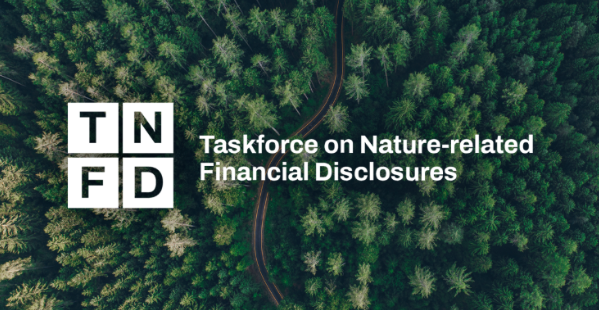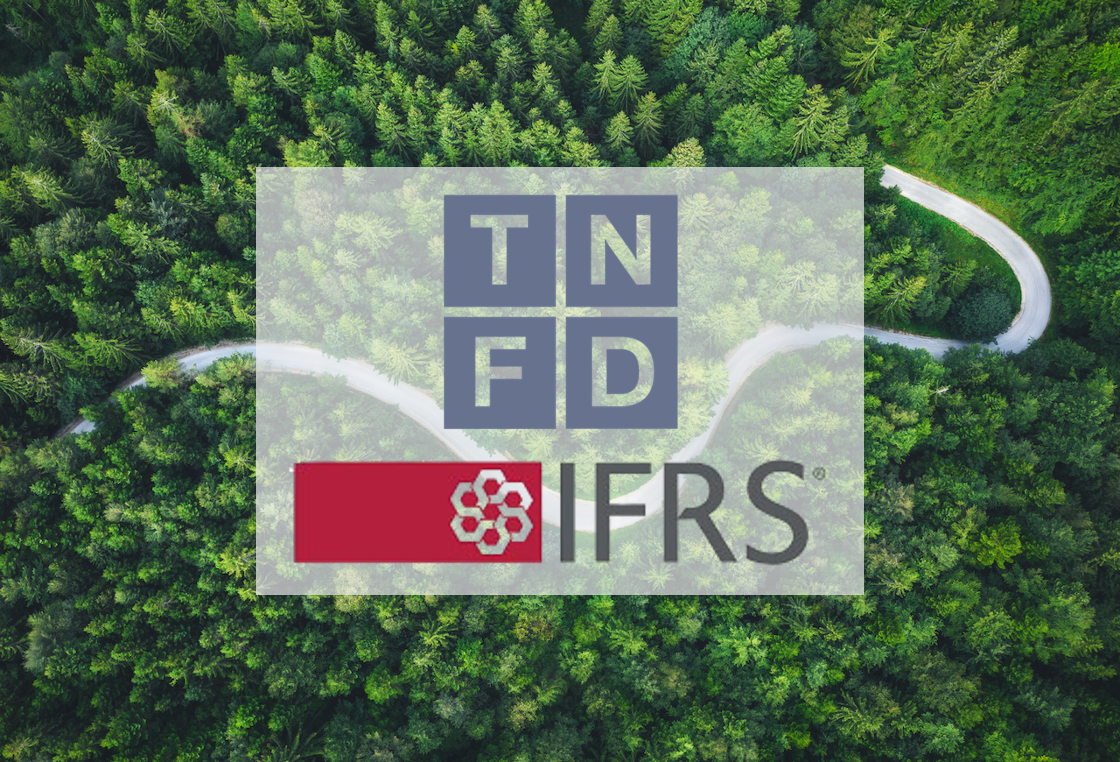TNFD and UN SSE Release Model Guidance for Stock Exchanges on Nature-related Financial Disclosures
Nature is becoming a key factor in financial decision-making, prompting stock exchanges to play a central role in advancing nature-related disclosures. In response, the TNFD and the UN SSE initiative have jointly released a Model Guidance to support these efforts across global markets.
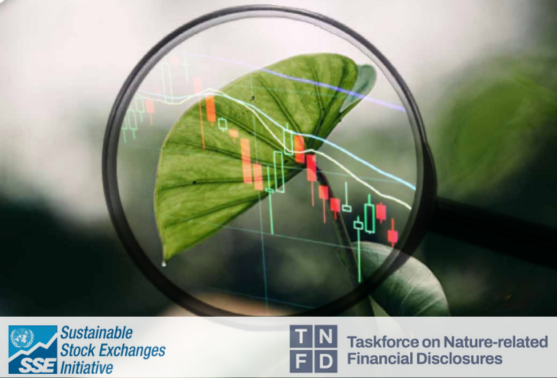
The Taskforce on Nature-related Financial Disclosures (TNFD) and the United Nations Sustainable Stock Exchanges Initiative (SSE) have published Model Guidance on Nature-Related Financial Disclosures: A template for stock exchanges, providing stock exchanges with a comprehensive template to support issuers in understanding and disclosing nature-related dependencies, impacts, risks and opportunities.
Growing Market Momentum Drives New Framework
The guidance responds to significant market demand, with over 620 organisations representing more than USD 20 trillion in assets under management and USD 7 trillion in market capitalisation having voluntarily committed to making TNFD-aligned disclosures as of 31 July 2025. Additionally, over 500 first-generation TNFD-aligned reports have already been published, demonstrating substantial appetite for practical capacity-building support across markets and sectors globally.
The publication builds upon the established UN SSE Model Guidance series, which previously addressed ESG disclosure, climate disclosures, sustainability-related financial disclosures, and climate transition plans. This nature-focused addition recognises that more than half of global GDP is moderately or highly dependent on nature and its services, whilst seven of nine planetary boundaries have already been breached according to recent research.
Template Structure for Exchange Adaptation
This document is designed to serve as a template for stock exchanges, providing a structured foundation to assist companies in disclosing nature-related financial information. The Model Guidance follows a four-chapter structure designed to walk companies through the disclosure process. The framework covers understanding nature-related concepts, aligning with TNFD recommendations, implementing the LEAP approach for assessment, and communicating findings to investors and stakeholders.
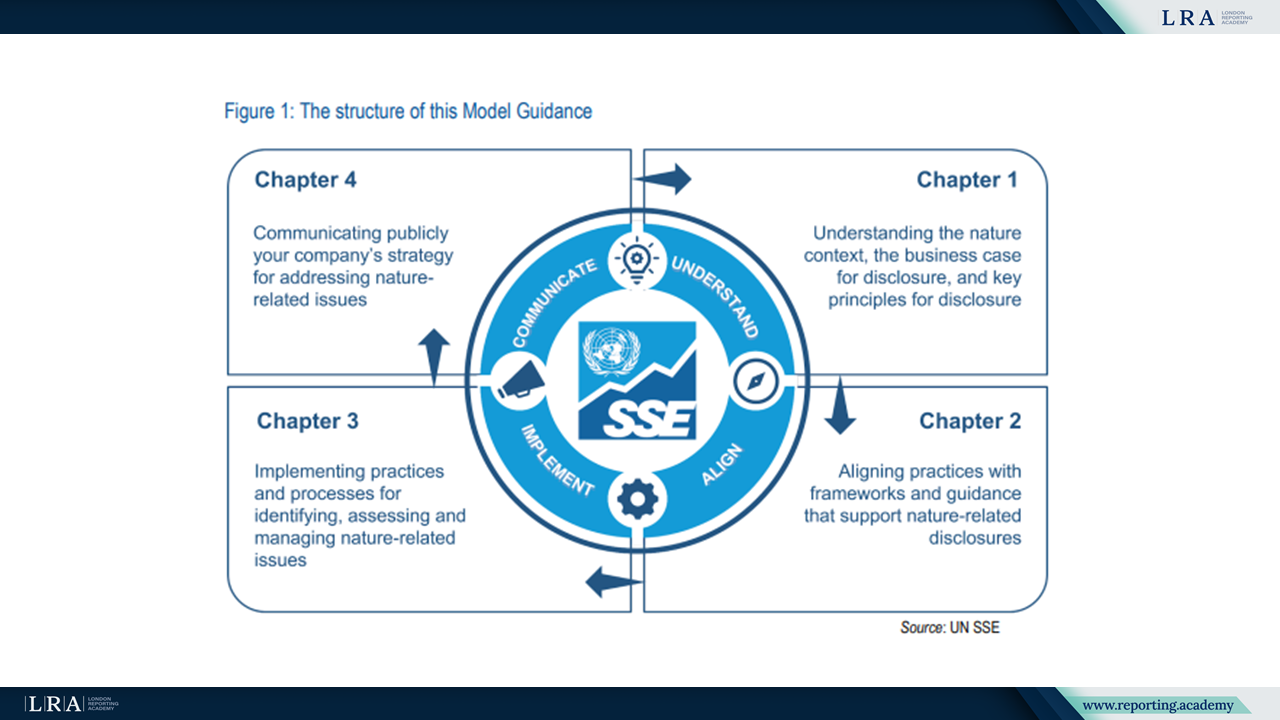
Source: Model Guidance on Nature-Related Financial Disclosures: A template for stock exchanges
Stock exchanges are positioned to play a crucial role in preparing their markets by providing training, guidance and toolkits for companies and investors. The template allows exchanges to adapt content to their local market context whilst maintaining consistency with global disclosure expectations. Customisation may include details on key industries with high exposure to nature-related issues within specific jurisdictions, as well as information about regionally significant biome types.
TNFD Framework and Standards Interoperability
The guidance clarifies that TNFD provides a voluntary framework with recommendations for disclosures, not a disclosure standard itself. This distinction enables organisations to integrate TNFD recommendations with widely used sustainability reporting standards including the IFRS Sustainability Disclosure Standards (ISSB Standards), Global Reporting Initiative (GRI), and European Sustainability Reporting Standards (ESRS).
The TNFD's 14 recommended disclosures are structured across four pillars consistent with the TCFD architecture: governance, strategy, risk and impact management, and metrics and targets. These recommendations are underpinned by six general requirements covering materiality application, scope of disclosures, location of nature-related issues, integration with other sustainability-related disclosures, time horizons, and engagement with Indigenous Peoples, Local Communities and affected stakeholders.
The framework accommodates different approaches to materiality, supporting both financial materiality aligned with ISSB standards and impact materiality consistent with GRI and ESRS requirements. This flexibility enables adoption across various jurisdictional contexts and reporting requirements.
LEAP Approach for Systematic Assessment
Central to the guidance is the LEAP approach, a structured methodology for identifying and assessing nature-related dependencies, impacts, risks and opportunities. The approach comprises four phases: Locate, Evaluate, Assess and Prepare. Organisations are encouraged to apply LEAP iteratively, starting with smaller scope assessments and progressively building depth and breadth over time.
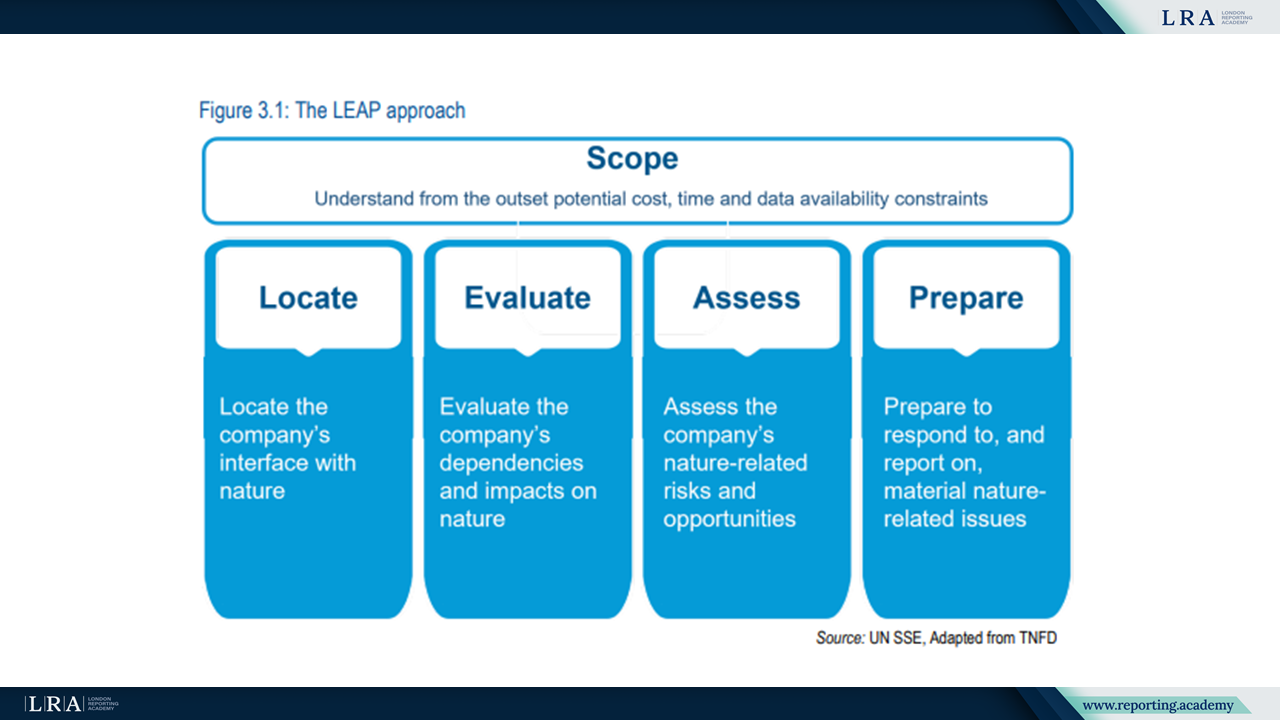
Source: Model Guidance on Nature-Related Financial Disclosures: A template for stock exchanges
The Locate phase filters and prioritises nature-related issues through three lenses: sector, value chain and geography, with particular attention to ecologically sensitive locations. The Evaluate phase develops understanding of material dependencies on ecosystem services and impacts on nature. The Assess phase identifies nature-related risks and opportunities stemming from identified dependencies and impacts, whilst integrating these into existing risk management processes. The Prepare phase focuses on developing response strategies, setting targets and preparing public disclosures.
The guidance emphasises that nature-related dependencies, impacts, risks and opportunities are highly location and context-dependent. Different industries interact with nature in distinct ways, with exposure to physical, transition and systemic risks varying significantly based on local environmental conditions, social contexts and regulatory frameworks.
Investor Expectations and Regulatory Developments
The publication highlights accelerating investor momentum through initiatives such as Nature Action 100 and PRI’s Spring programme. Financial institutions increasingly recognise that unchecked nature loss poses material risks to portfolios, with central banks warning of potential threats to financial stability.
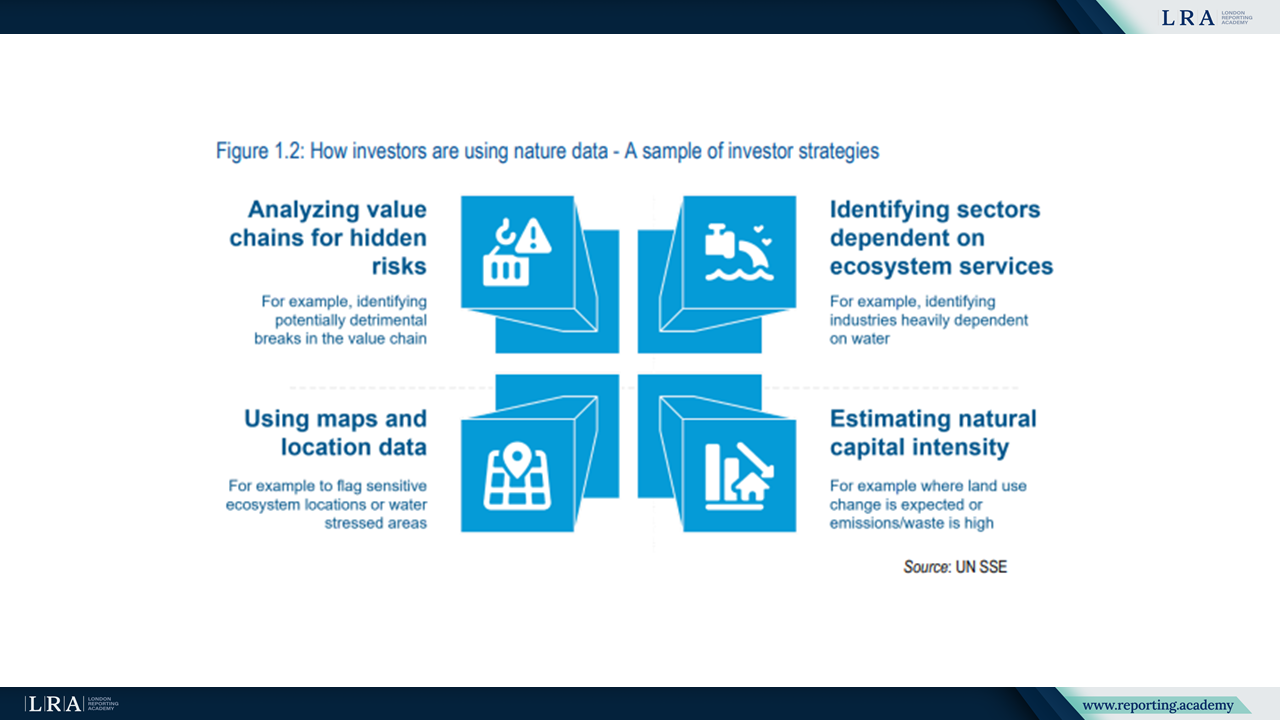
Source: Model Guidance on Nature-Related Financial Disclosures: A template for stock exchanges
Regulatory developments are also advancing rapidly. Target 15 of the Kunming-Montreal Global Biodiversity Framework calls on governments to require large companies and financial institutions to assess and disclose their biodiversity-related risks, dependencies and impacts. A 2024 UNEP FI report identified at least 29 jurisdictions totalling more than USD 77 trillion of banking assets that have started considering nature risk in their prudential frameworks.
Stakeholder Engagement as Core Component
The guidance places significant emphasis on meaningful engagement with Indigenous Peoples, Local Communities and affected stakeholders throughout the assessment and disclosure process. This represents a notable expansion beyond typical financial reporting requirements, recognising that these communities host the majority of the world's remaining biodiversity and possess traditional knowledge critical for effective nature stewardship.
The TNFD framework integrates engagement requirements across all phases of the LEAP approach, with specific guidance on appropriate questions and culturally sensitive reporting formats. Organisations are expected to demonstrate how stakeholder feedback has informed materiality assessments, risk identification and strategy development.
Implementation Support and Resources
To support practical implementation, the guidance references extensive TNFD resources including sector-specific guidance covering food and agriculture, metals and mining, construction materials, financial institutions and household and personal care products. Additional resources address specific biomes such as tropical and subtropical forests, savannas and grasslands, intensive land-use systems, rivers and streams, and marine shelf ecosystems.
The TNFD has also developed supplementary guidance on scenario analysis, value chains, metrics and target-setting, enabling organisations to build comprehensive assessments tailored to their specific contexts. A tools catalogue provides access to nature-related data and analytics platforms applicable to different assessment components and disclosure requirements.
The Model Guidance represents a significant step towards standardising nature-related financial disclosures globally, whilst providing the flexibility necessary for local market adaptation. As regulatory requirements continue to evolve and investor scrutiny intensifies, stock exchanges adopting this template will be better positioned to prepare their markets for the transition to nature-positive economic models.

